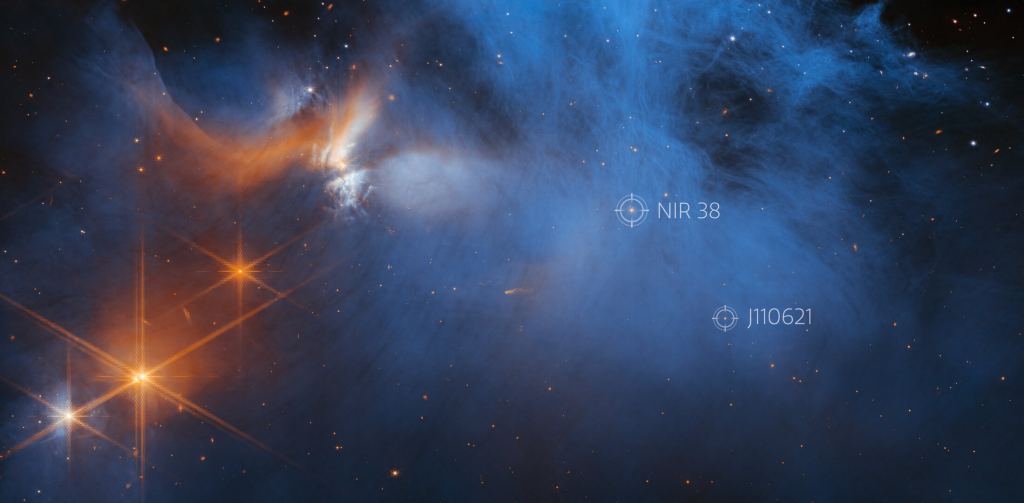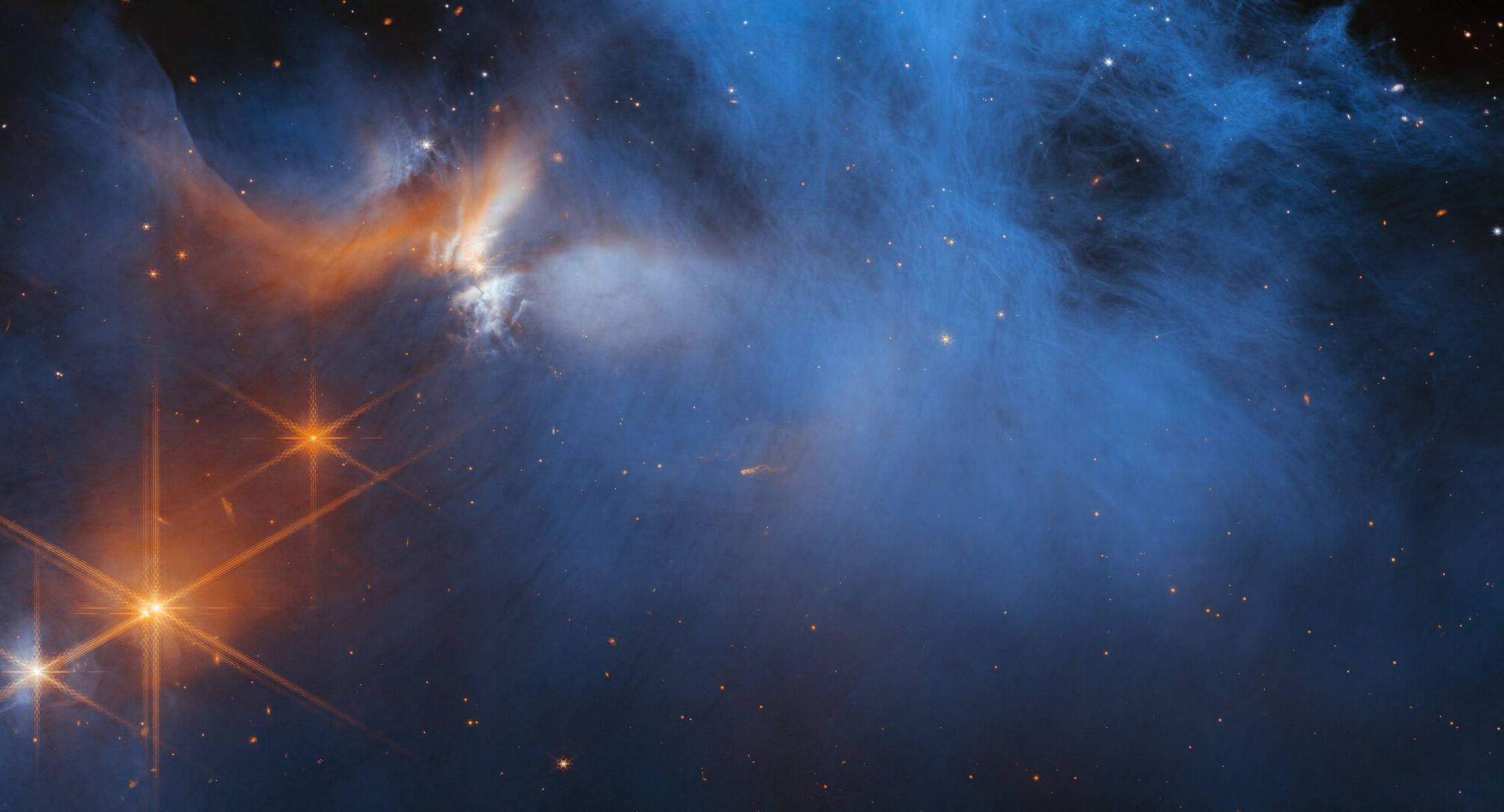Want to build a habitable planet? Then you’ll need various and sundry ingredients such as carbon, hydrogen oxygen, nitrogen and sulfur. The James Webb Space Telescope has found the building blocks for these key ingredients in the colds depths of a distant protostellar nebula called the Chameleon I molecular cloud. Scientists say the discovery of these proto-ingredients allows astronomers to examine the simple icy molecules that one day will be incorporated into future exoplanets.
“Our results provide insights into the initial, dark chemistry stage of the formation of ice on the interstellar dust grains that will grow into the centimeter-sized pebbles from which planets form in discs,” said Melissa McClure, an astronomer at Leiden Observatory who is the principal investigator of the observing program and lead author of the paper describing this result. “These observations open a new window on the formation pathways for the simple and complex molecules that are needed to make the building blocks of life.”
The observing program, called the Ice Age project is one of JWST’s Early Release Science programs which help to showcase the new telescope’s observing capabilities and allow the astronomical community to learn how to get the most out of their observing time with the various instruments.
The discovery was made using a technique that studies how starlight from beyond the molecular cloud was absorbed by icy molecules at specific infrared wavelengths visible to Webb. Astronomers used light from a background star, named NIR38, to illuminate the dark cloud. JWST’s instruments were able to eek out the chemical fingerprints known as absorption spectra which can be compared with laboratory data to identify which ices are present in the molecular cloud.

In addition to simple ices like water, the team was able to identify frozen forms of a wide range of molecules, from carbon dioxide, ammonia, and methane, to the simplest complex organic molecule methanol. This is the most comprehensive census to date of the icy ingredients available to make future generations of stars and planets.
The Chameleon I molecular cloud is roughly 600 light-years from Earth and as the image above shows, dozens of young stars have formed with others beginning to form. While the ices embedded in this cold, dense and dark region are difficult to discern, JWST’s infrared vision was able to investigate region by using the background starlight.
“We simply couldn’t have observed these ices without Webb,” elaborated Klaus Pontoppidan, Webb project scientist at the Space Telescope Science Institute, who was involved in this research. “The ices show up as dips against a continuum of background starlight. In regions that are this cold and dense, much of the light from the background star is blocked and Webb’s exquisite sensitivity was necessary to detect the starlight and therefore identify the ices in the molecular cloud.”

These building blocks of carbon, hydrogen, oxygen, nitrogen, and sulfur are referred to collectively as CHONS. These elements are important ingredients in planetary atmospheres. A leading theory for our Solar System is that CHONS were delivered to Earth’s surface by impacts with icy comets or asteroids. However, astronomers also believe these ingredients were likely already present in the ices of the dark cloud of cold dust and gas that would eventually collapse to form the Sun and planets. make the Solar System. In these regions of space, icy dust grains provide a unique setting for atoms and molecules to meet, which can trigger chemical reactions that form very common substances like water. Detailed laboratory studies have further shown that some simple prebiotic molecules can form under these icy conditions.
The Ice Age team have more observations to make, and hope to trace out the journey of ices from their formation through to the assemblage of icy comets.
Sources: JWST press release

